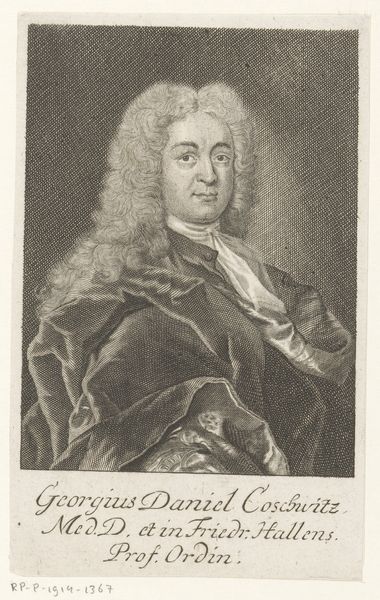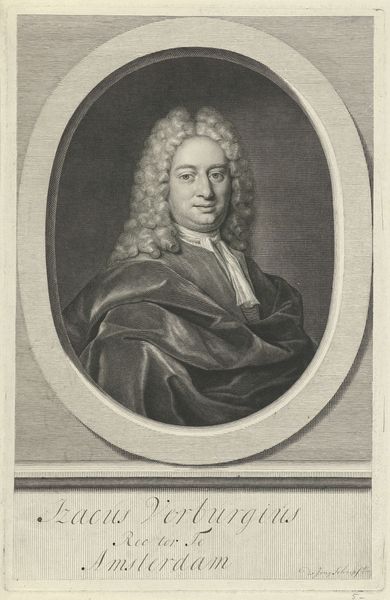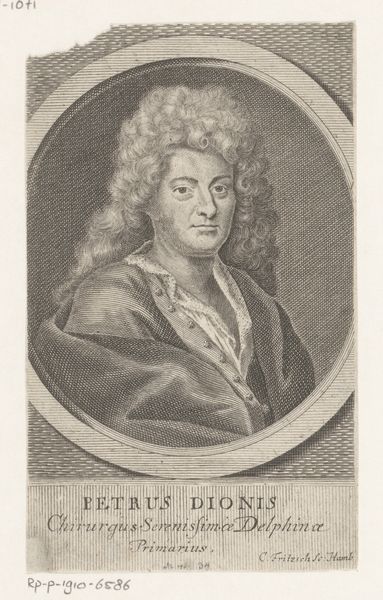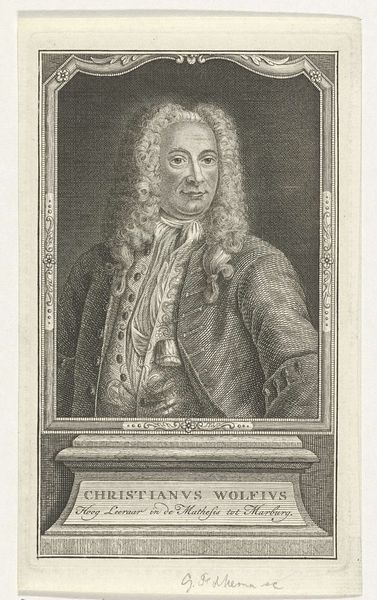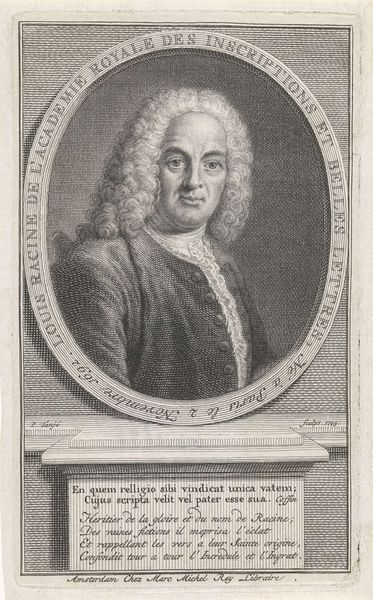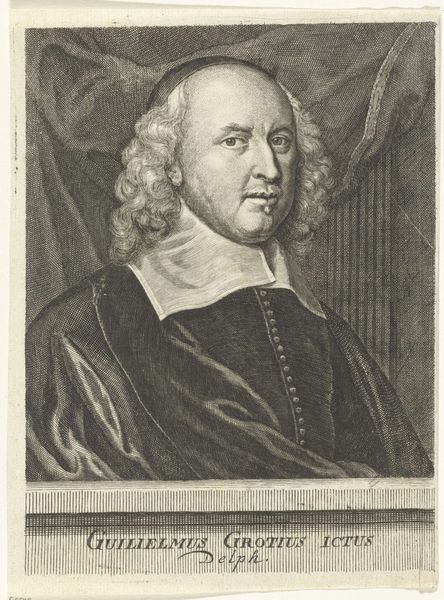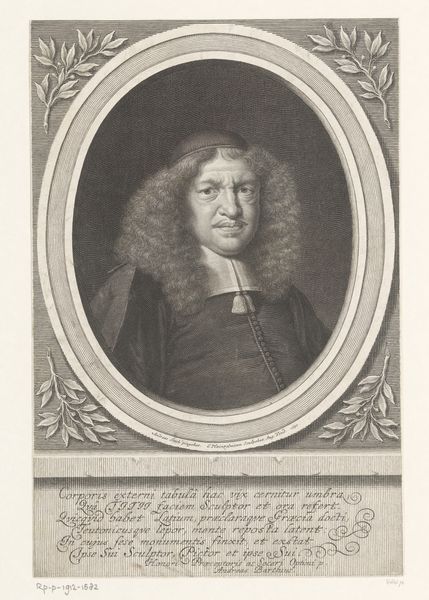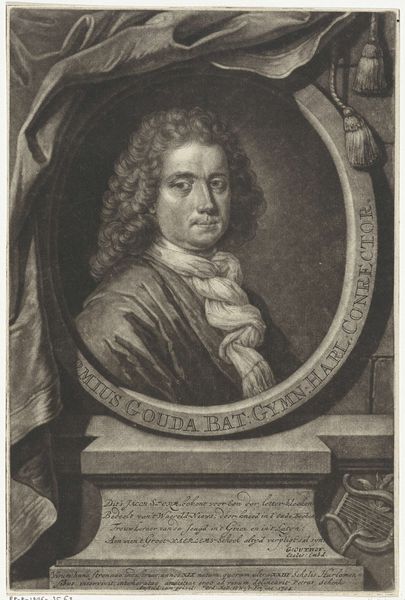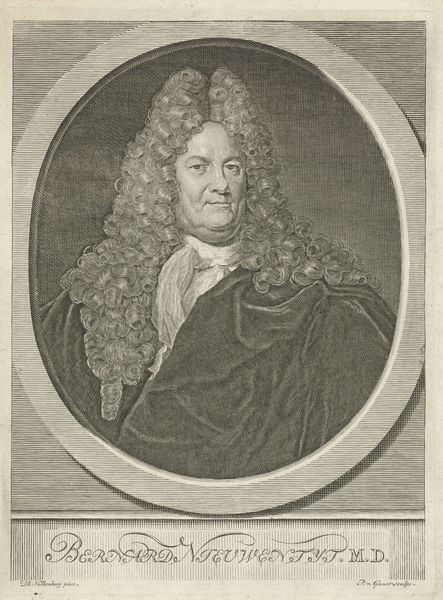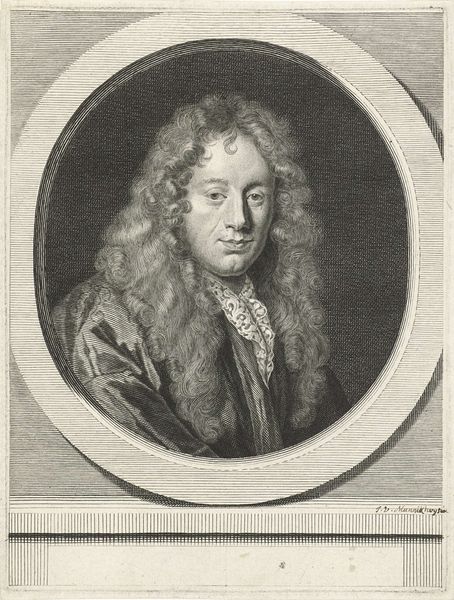
Dimensions: 171 mm (height) x 129 mm (width) (bladmaal), 160 mm (height) x 116 mm (width) (plademaal), 76 mm (height) x 61 mm (width) (billedmaal)
Editor: We’re now looking at a rather dashing portrait of L. Holberg, etched by J.F. Clemens, dating sometime between 1748 and 1831. It has such an… official feel, almost imposing, don’t you think? What's your interpretation? Curator: Oh, official for sure, and that’s the point, isn't it? Think of it less as imposing and more as...establishing authority. I see a portrait brimming with the aspirations of the Enlightenment. That wig, those robes—it’s all visual language, proclaiming Holberg’s intellectual stature. Notice how the crisp lines of the etching, especially in the face, create a sense of clarity and reason? Editor: Clarity, yes. It's meticulously done, the details of his garments and the wig... I was wondering if the baroque style, as indicated in the metadata, influenced the artist to use that? Curator: Ah, Baroque! You're on the right track. It is a dance between two eras, my friend. Clemens, looking back towards the theatrical drama of the Baroque – think of the elaborate ornamentation – whilst also embracing the Enlightenment’s emphasis on reason and observation, finding that perfect balance. Editor: So, a bridge between styles, representing a man straddling eras? Curator: Precisely. And isn't that the story of intellectual movements themselves? We see what came before even as we step into something new. Holberg's portrait then becomes less about individual vanity, more about the spirit of its time, don't you agree? Editor: Absolutely, I hadn't thought of it that way! That contextual blending really reframes the piece, beyond the initial "official" feeling. Curator: That's the beautiful thing, isn’t it? Art whispering the secrets of its time if we only lean in and listen.
Comments
No comments
Be the first to comment and join the conversation on the ultimate creative platform.
